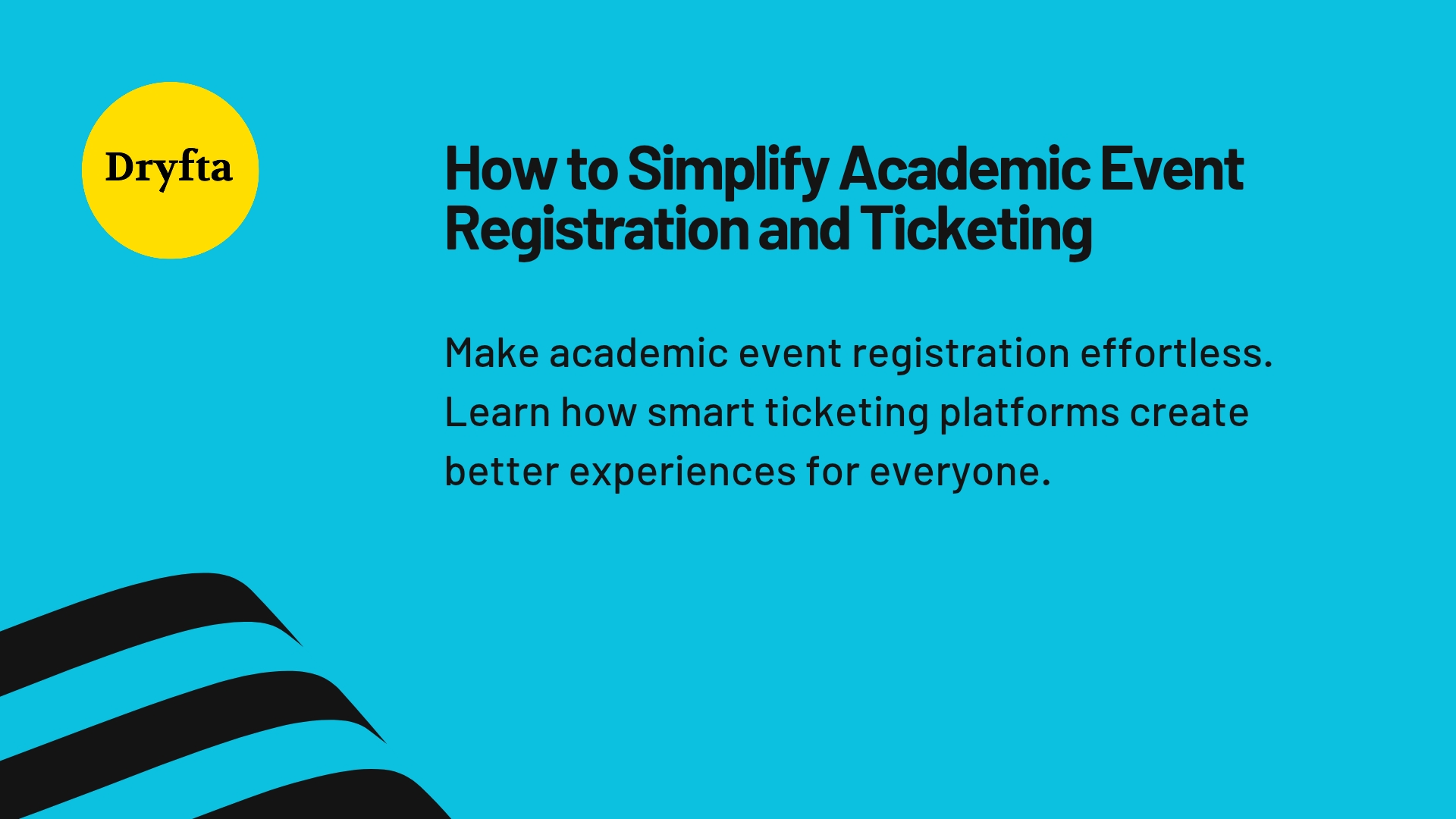All year round, the brightest minds from across the globe come together for the sake of academia. Scientific inquiry brings together researchers, students, faculty members, and industry professionals to share knowledge and progress in their fields. Even when organizing a small departmental symposium or a large international conference, registration and ticketing can quickly become overwhelming.
Segregating attendee categories, varying fee structures, abstract submissions and special requirements make academic event management particularly challenging.
Many organizers still rely on spreadsheets, email chains and manual data entry to handle registrations. This approach works for very small gatherings but becomes unmanageable as your event grows. You end up spending countless hours on administrative tasks instead of focusing on program content and attendee experience.
The good news is that modern technology offers better solutions. You can streamline your entire registration and ticketing process with the right tools.
The Challenges of Academic Events
Academic conferences differ significantly from corporate events or festivals. You typically deal with multiple attendee categories including students, faculty, researchers and industry professionals. Each category often has different registration fees and requirements.
Abstract and paper submissions need to be managed carefully. Submissions ought to be reviewed and later sent to reviewers. Managing this process manually through email becomes chaotic very quickly.
Start with Clear Registration Categories
You should begin by defining your attendee categories clearly before building your registration system. Academic events typically include students, early career researchers, faculty members, industry professionals, and sometimes accompanying guests.
Each category should have a clear definition that leaves no room for interpretation. You might separate undergraduate students from graduate students or distinguish between faculty from member institutions versus non-member institutions. However, avoid creating too many categories. More than six or seven registration types start to confuse attendees and complicate your data management.
Build a User-Friendly Registration Form
A confusing or overly complicated form drives people away before they even complete registration. You should design your form with clarity and simplicity as top priorities. Only ask for information you actually need. Every additional field you add increases the likelihood that someone will abandon the registration process.
Basic information like name, email, affiliation and attendee category is important and some additional details about dietary restrictions, accessibility needs and session preferences can be useful. However, questions about personal interests or detailed demographic information should be optional.
Implement Flexible Payment Options
Academic attendees need multiple ways to pay for registration. Credit card processing should be your primary payment method because it provides instant confirmation and simplifies your accounting. You should work with a payment processor that handles international cards and multiple currencies if you expect global attendance. However, many academics cannot use personal credit cards for conference fees. Their institutions require purchase orders or direct invoicing.
You need a system for handling these alternative payment methods without creating massive administrative overhead. Automated invoice generation saves you from manually creating documents for every institutional payment request.
Create Flexible Ticketing Options
Many academic events include optional components beyond the main conference. Pre-conference workshops, social events, field trips and meals might have separate fees and capacity limits. Your ticketing system needs to handle these add-ons without creating confusion.
You should present optional items clearly during the registration process. People need to understand what each ticket includes, how much it costs, and whether space remains available. Group ticketing options can encourage department-wide attendance. You might offer discounted rates when five or more people from the same institution register together.
Test Everything Before Launch
You should thoroughly test your registration system before announcing it publicly. A broken or confusing registration process damages your event’s reputation and costs you registrations.
Walk through the entire process yourself from multiple perspectives. Ask colleagues to complete test registrations and provide feedback about their experience. They will notice confusing wording, unclear instructions, or technical glitches that you missed. Pay attention to how long the process takes and where people hesitate or get confused. Keep testing even after launch. Technology may malfunction anytime.
Simplify Post-Registration Management
Your work does not end when someone completes registration. You need systems for handling changes, cancellations and special requests that come in throughout your planning timeline. Your platform should let attendees log in and update certain information themselves.
They can correct typos in their name, update their email address or modify their dietary requirements without needing your intervention. However, you should maintain control over changes that affect revenue or capacity like switching registration categories or adding sold-out workshops.
Dealing with Refund and Cancellation
You need a clear refund and cancellation policy that you communicate during registration. The system should handle these requests according to your policy without requiring manual calculations. You might offer full refunds up to a certain date, partial refunds closer to the event and no refunds within a week of the conference.
Learn and Improve for Future Events
Every event teaches you something about what works and what needs improvement. You should gather feedback about the registration process specifically, not just the overall event experience. Knowing where people struggled helps you refine your approach for next time.
You can include a few questions about registration in your post-event survey. Ask whether the process was straightforward, if any information was confusing, and what improvements they would suggest.
Low completion rates or abandoned registrations in your data also indicate problems worth investigating. Make sure to keep note of your processes and decisions for future reference. Note which registration categories worked well, what capacity limits were appropriate and which communications proved most effective. This knowledge prevents you from repeating mistakes and helps new team members get up to speed quickly.
The Bottom Line
The end goal of any event is to create a better program and experience for everyone who attends. The strategies we have outlined here work best when you have the right infrastructure supporting them. Handling event registration for your academic conference does not need to be complicated or time-consuming any longer.
If the current registration process you go by feels like more work than it should be, it may be time for you to explore what purpose-built tools like Dryfta can do for your next event. In doing so, you have plenty of time left to channelize into better, more creative avenues of the event.
Dryfta was designed to do exactly this. We’ve built a software keeping academic events like yours in mind. If you’re ready to take the plunge and make event management simpler than it should be, visit us at Dryfta.





